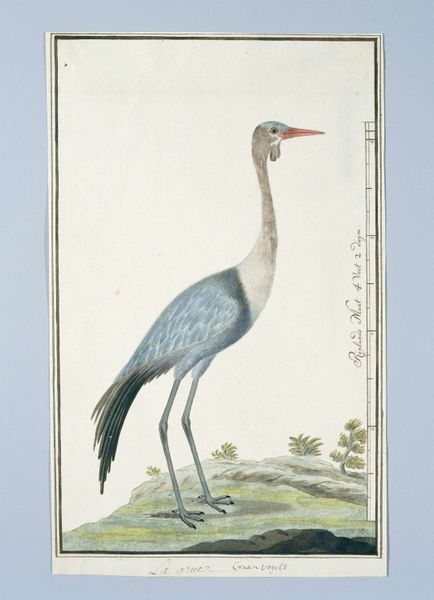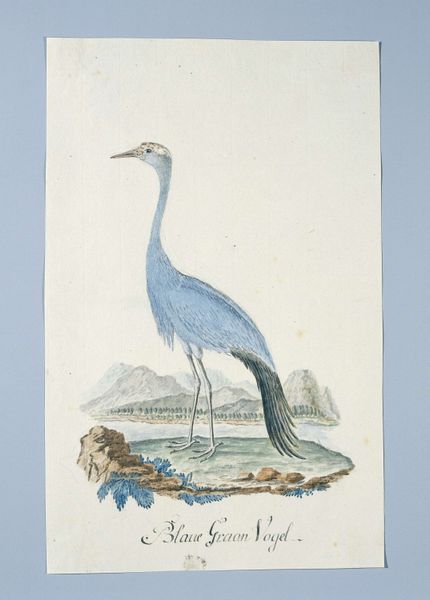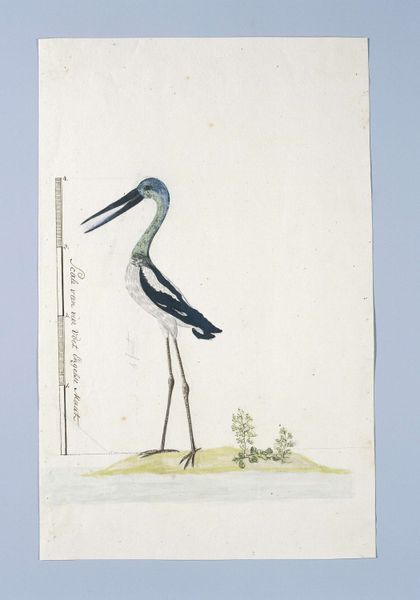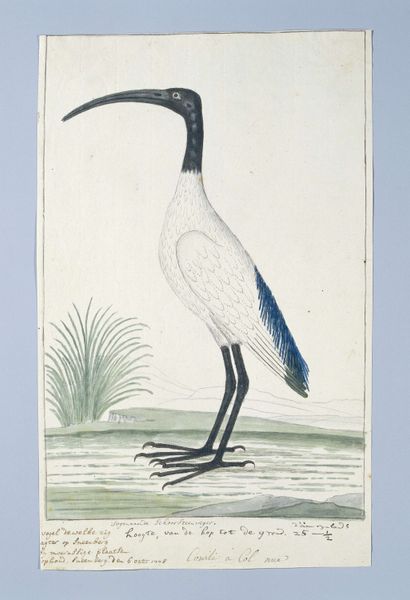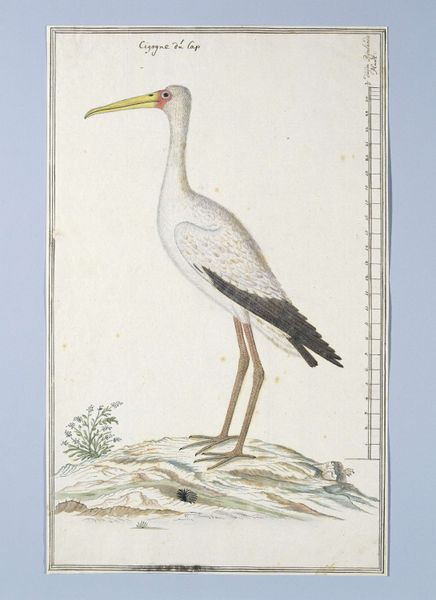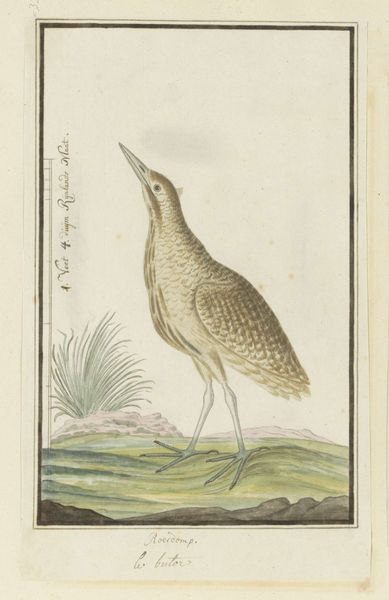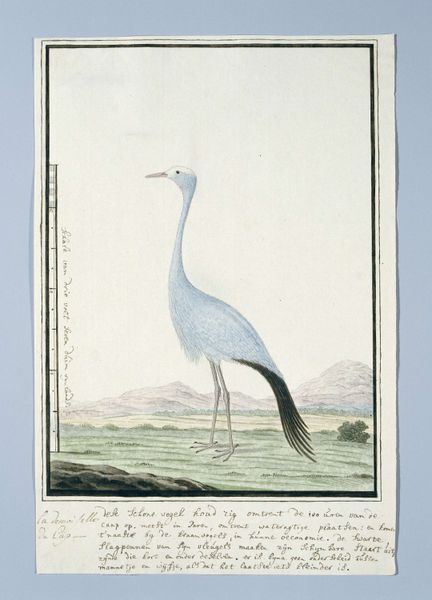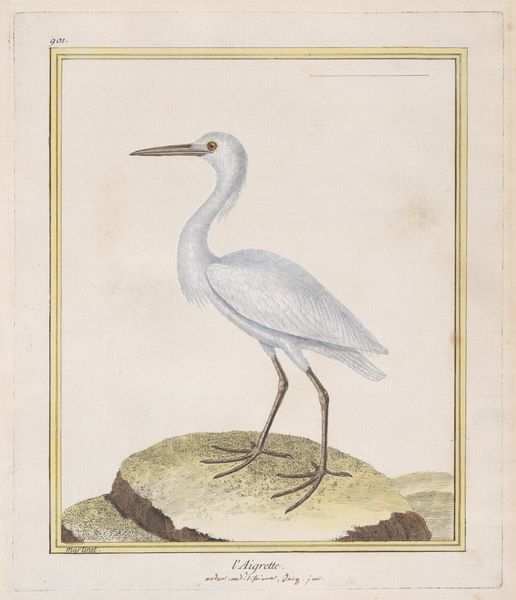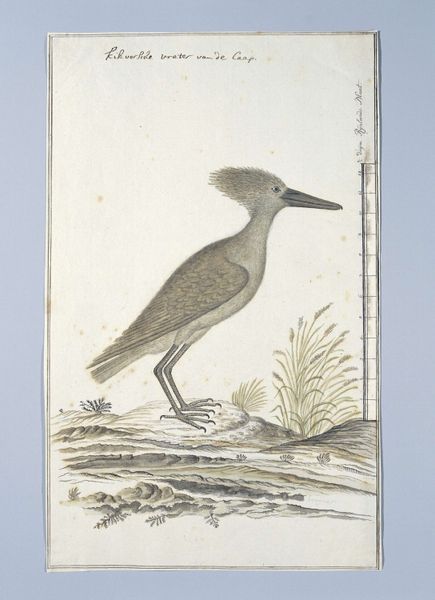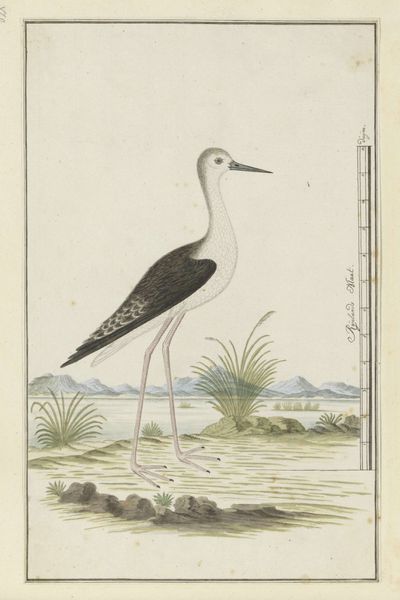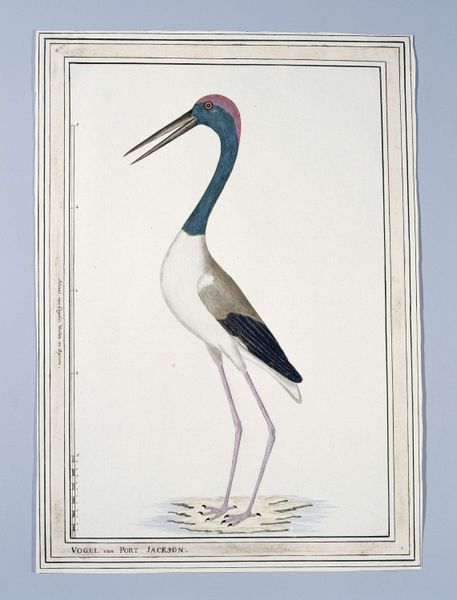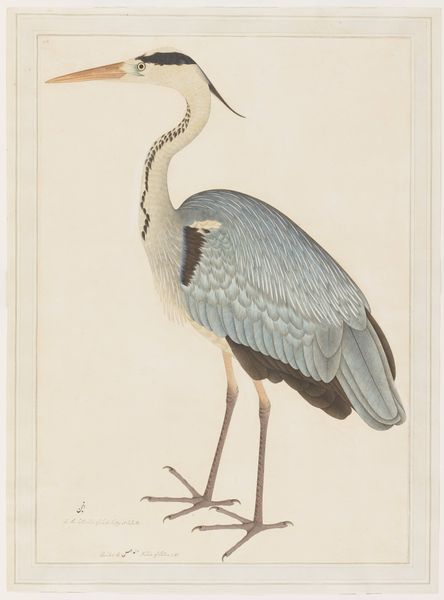
drawing, coloured-pencil, paper, watercolor, ink, pencil
#
drawing
#
coloured-pencil
#
paper
#
watercolor
#
ink
#
coloured pencil
#
pencil
Dimensions: height 660 mm, width 480 mm, height 417 mm, width 248 mm, height 362 mm, width 237 mm
Copyright: Rijks Museum: Open Domain
Robert Jacob Gordon made this watercolor of a Grey Heron during the late 18th century. As a Dutch military officer and explorer in Southern Africa, Gordon's identity was deeply intertwined with the colonial project. This image presents a blend of scientific observation and colonial perspective. Gordon meticulously depicts the heron's physical characteristics, reflecting the Enlightenment's interest in natural history. Yet, the act of documenting and classifying the natural world was also a means of asserting control over it. The heron, native to Southern Africa, becomes a symbol of the land Gordon sought to understand and, in a way, claim. What does it mean to capture the essence of a place through its fauna, when that act is itself an assertion of power? How do we reconcile the genuine curiosity and scientific value of Gordon's work with its undeniable connection to colonial expansion? Consider the emotional weight of viewing a landscape through the eyes of both a naturalist and a colonizer.
Comments
No comments
Be the first to comment and join the conversation on the ultimate creative platform.

